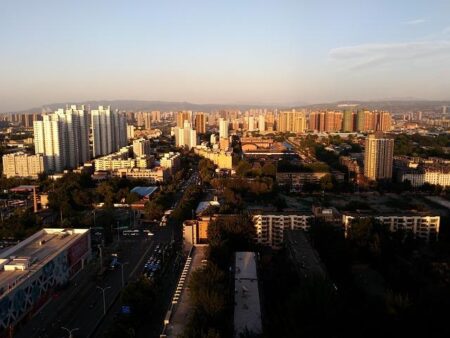Australian universities are set to face significant cuts, with hundreds of courses in teaching, languages, and media among those slated for elimination, according to a report by The Guardian. The move, driven by budget constraints and shifting academic priorities, raises concerns about the future diversity and accessibility of higher education across the country. Students, educators, and industry experts warn that slashing these programs could have far-reaching consequences for Australia’s cultural literacy, workforce readiness, and global engagement.
Impact of Course Reductions on Future Educators and Media Professionals
The decision to cut courses in disciplines such as teaching, languages, and media poses significant challenges for emerging professionals in these fields. Aspiring educators now face fewer opportunities to receive comprehensive training essential for navigating increasingly diverse and dynamic classrooms. This contraction could exacerbate teacher shortages, particularly in regional and remote areas, and diminish the overall quality of education. Meanwhile, students of media and communications confront a reduced capacity to develop critical skills in storytelling, digital literacy, and ethical journalism-key components in an age where information dissemination is rapidly evolving.
These reductions not only disrupt individual career pathways but also threaten Australian universities’ ability to foster a well-rounded, future-ready workforce. The loss of diverse language programs raises concerns about the country’s global cultural engagement and diplomacy efforts, while media program cuts risk weakening the media landscape’s resilience against misinformation. Key impacts are summarized below:
- Teacher shortages in rural and underserved communities
- Lack of multilinguistic proficiency limits cultural exchange and trade
- Media skill gaps impede quality journalism and media innovation
- Reduced academic diversity restricts interdisciplinary learning
| Field | Current Impact | Long-term Concern |
|---|---|---|
| Teaching | Decreasing enrolments | Teacher supply gaps nationwide |
| Languages | Course closures in rare languages | Reduced cultural competency |
| Media | Fewer practical training modules | Decline in investigative journalism |
University Strategies Behind the Widespread Cuts to Language and Teaching Programs
Facing financial pressures and shifting enrollment trends, many Australian universities are strategically prioritizing STEM and business faculties over traditional language, teaching, and media programs. The rationale centers on perceived market demands and graduate employability, leading to widespread program discontinuations. Administrators often cite budgetary constraints and the need to streamline course offerings to attract international students in more lucrative fields. This shift not only impacts academic diversity but also raises concerns about the long-term cultural and societal consequences of dismantling humanities and social science disciplines.
- Budget reallocation: Redirecting funds to high-demand STEM and business departments.
- Enrollment metrics: Cutting low-demand language and teaching courses due to declining student numbers.
- Strategic market positioning: Aligning course offerings with global workforce trends and funding incentives.
- International student appeal: Focusing on programs with higher international enrollment potential.
| Faculty | 2019 Enrollment | 2024 Projection | Funding Change |
|---|---|---|---|
| Languages & Humanities | 12,000 | 6,500 | ↓ 45% |
| Teaching Programs | 9,000 | 4,200 | ↓ 53% |
| STEM | 20,000 | 29,000 | ↑ 45% |
| Business & Media | 15,000 | 14,500 | ↔ Stable |
Critics argue that these dramatic structural changes risk undermining foundational skill sets and cultural competencies critical to a democratic society. The push towards commercial viability implicitly deprioritizes academic disciplines focused on critical thinking, intercultural communication, and social cohesion. University leaders are increasingly caught between fiscal responsibility and their mission to provide a broad, inclusive education.
Experts Call for Policy Reforms to Preserve Diverse Academic Pathways
Academic leaders and education experts are raising red flags over recent decisions that threaten to drastically reduce course offerings in teaching, languages, and media across numerous Australian universities. These cuts, critics argue, will not only narrow students’ options but also undermine the development of critical skills essential for a rapidly evolving global job market. University representatives warn that slashing such diverse academic pathways risks producing graduates less prepared for intercultural communication, innovation, and media literacy challenges in the 21st century.
The call for urgent policy reform centers on preserving a broad spectrum of disciplines that foster both specialized knowledge and adaptable competencies. Advocates emphasize the need for government and institutional stakeholders to reassess funding priorities and consider the long-term societal impacts of these reductions. Highlighted within the discussion are recommendations including:
- Maintaining robust support for language programs to enhance multicultural engagement.
- Investing in teacher education to address future skills shortages.
- Protecting media studies as critical for understanding information ecosystems.
| Discipline | Current Enrollment | Projected Cuts (%) |
|---|---|---|
| Teaching | 24,000 students | 35% |
| Languages | 12,500 students | 42% |
| Media & Communications | 18,000 students | 38% |
To Wrap It Up
As Australian universities prepare to implement sweeping cuts across hundreds of courses, the future of teaching, languages, and media programs hangs in the balance. With concerns mounting over the impact on educational diversity and workforce readiness, stakeholders are calling for urgent dialogue between government, institutions, and communities to address the long-term consequences. As this story develops, the fate of these vital disciplines remains a critical issue for the nation’s cultural and educational landscape.




